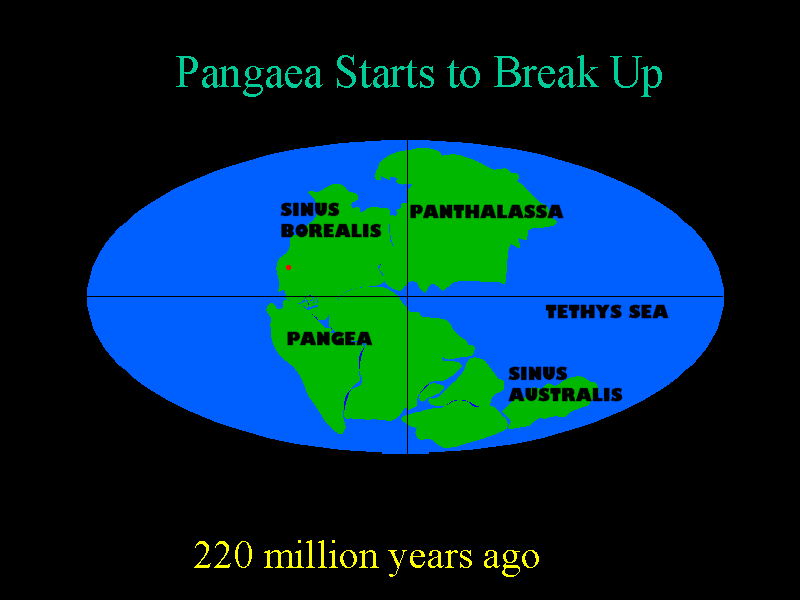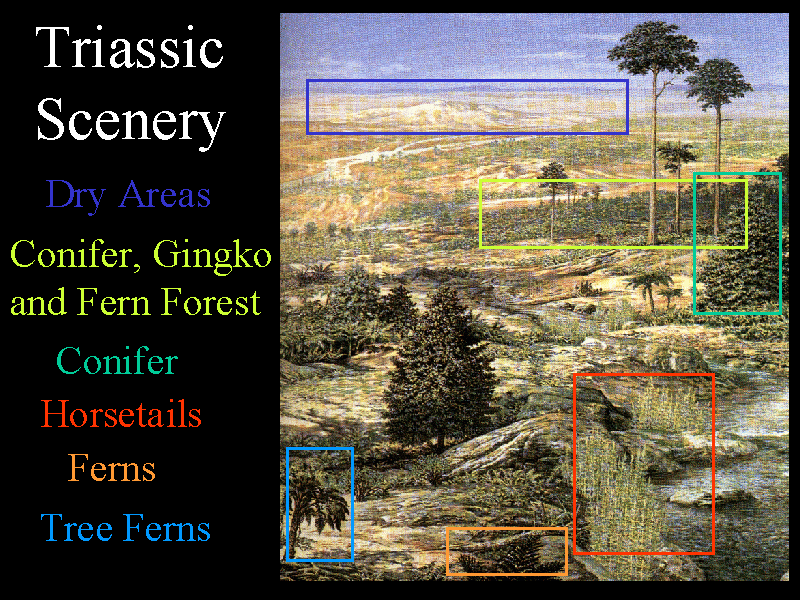Dinosaurs: Their Lives, Their Deaths and Their Evolution!
by Dr. Bob Gardner
Department of Mathematics
Department of Physics and Astronomy
Institute of Mathematical and Physical Sciences
East Tennessee State University
The Triassic Period
The Triassic Period lasted from 248 to 208 million years ago. At the beginning
of the Triassic, all the continental masses were joined together in a single
supercontinent called Pangaea.
 During the Triassic,
Pangaea started to break up into a northern landmass called
Laurasia
(which consisted of modern day North America, Europe, and Asia) and a
southern landmass called Gondwana (which consisted of modern day
South America, Africa, India, Australia, and Antarctica). Between Laurasia
and Gondwana was the Tethys Sea.
During the Triassic,
Pangaea started to break up into a northern landmass called
Laurasia
(which consisted of modern day North America, Europe, and Asia) and a
southern landmass called Gondwana (which consisted of modern day
South America, Africa, India, Australia, and Antarctica). Between Laurasia
and Gondwana was the Tethys Sea.
Due to the large landmass during the Triassic, much of the land was warm and
dry. There were no polar ice caps and the weather was very uniform. It was
almost as warm at the Arctic as at the Equator.
 A typical Triassic scene may have looked something like this. As seen in the
distance, the land is dominated by dry barren areas.
Near rivers and streams, there were pockets of highly fertile areas. Here
we see some of the flora (that is, plant life) of the Triassic:
mixed forests of conifer, ginkgos, and ferns,
conifers, horsetails,
ferns, and tree ferns.
This is the landscape in which the first dinosaurs evolved.
A typical Triassic scene may have looked something like this. As seen in the
distance, the land is dominated by dry barren areas.
Near rivers and streams, there were pockets of highly fertile areas. Here
we see some of the flora (that is, plant life) of the Triassic:
mixed forests of conifer, ginkgos, and ferns,
conifers, horsetails,
ferns, and tree ferns.
This is the landscape in which the first dinosaurs evolved.
Go to the next section.


